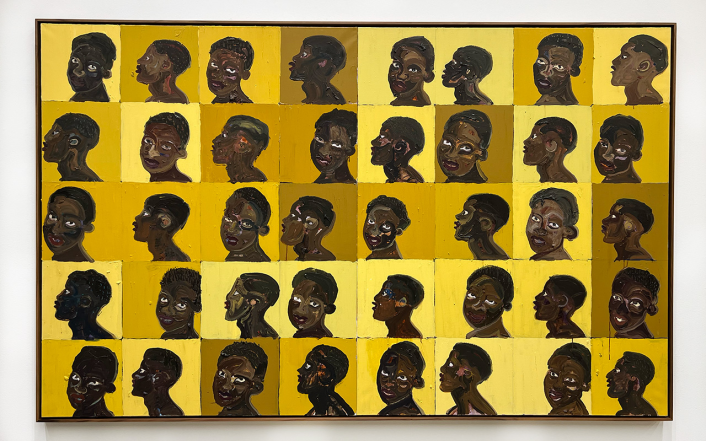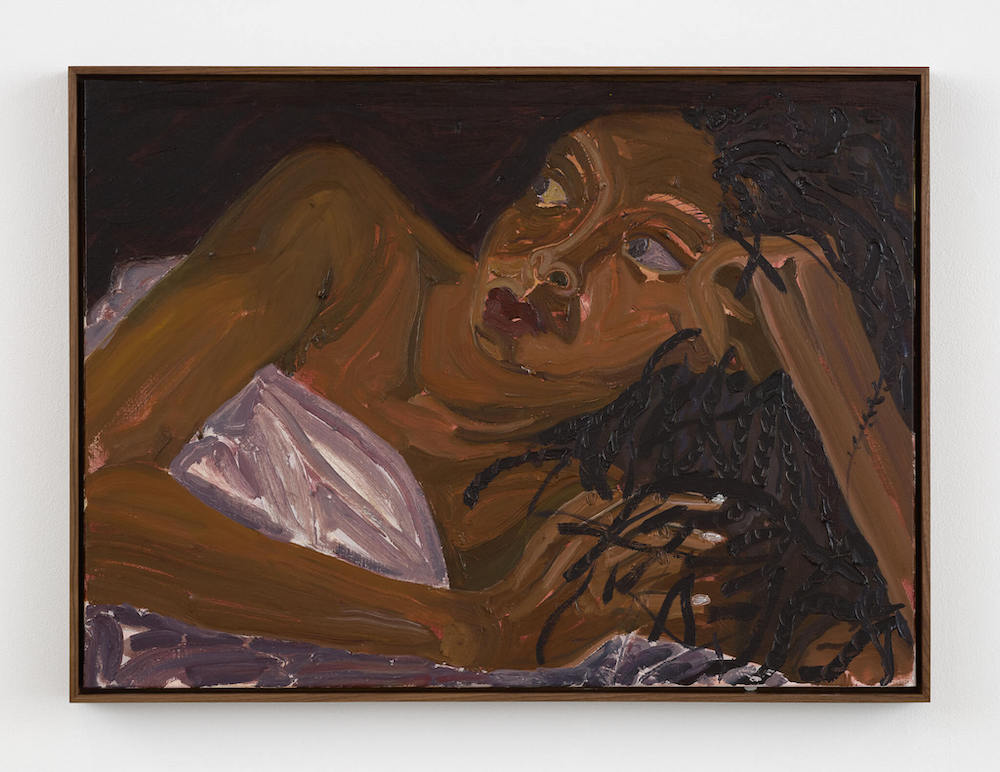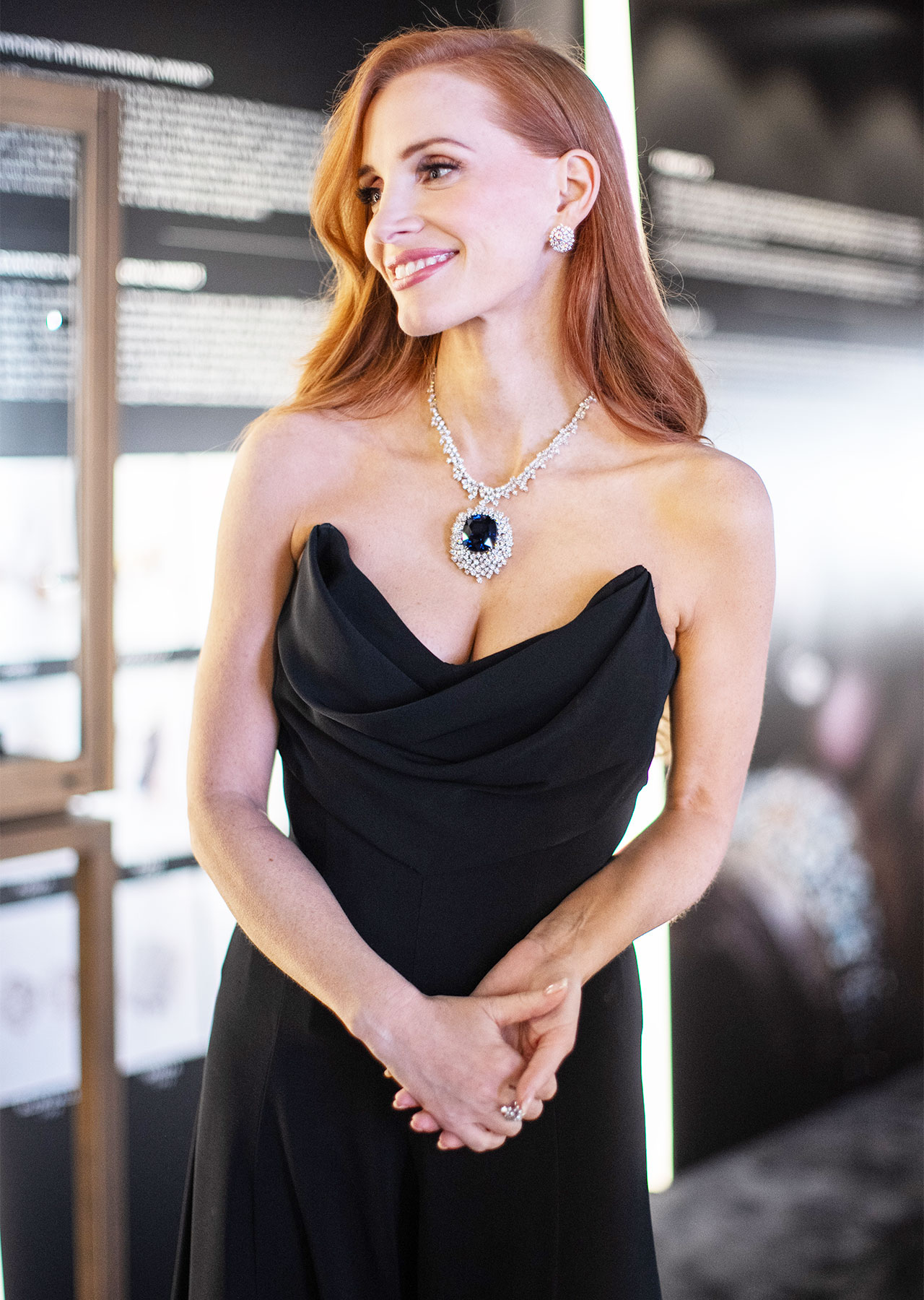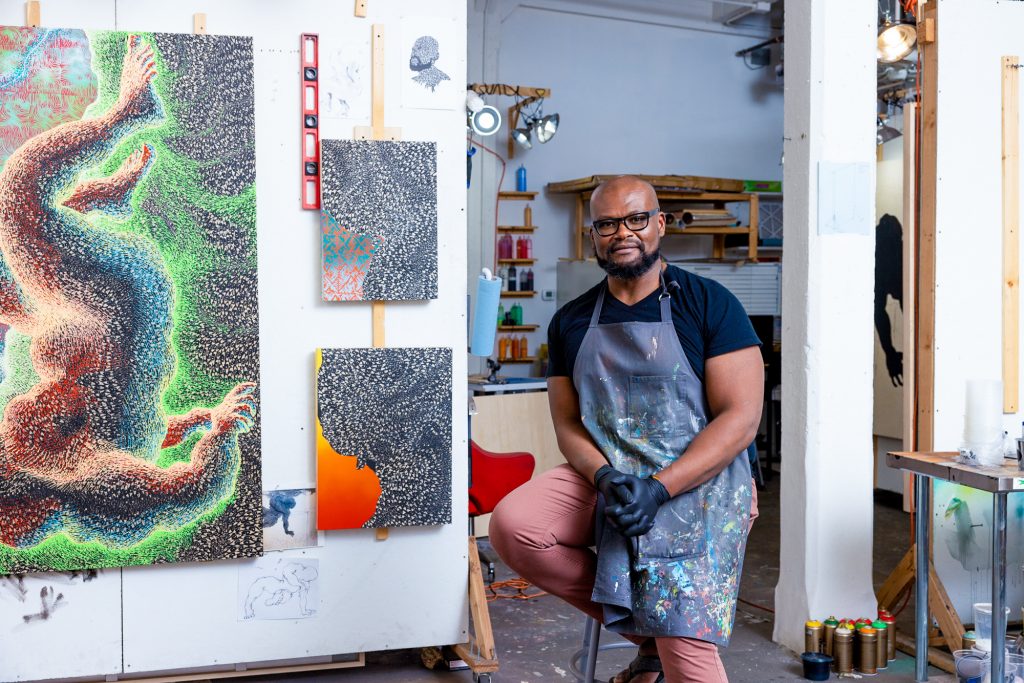In the heart of downtown Los Angeles, François Ghebaly Gallery recently played host to an evening of lively spirits, resonating with the soulful notes of live jazz. Laughter filled the gallery’s high-ceilinged space, creating an atmosphere of pure celebration. This festive setting was the perfect backdrop for “The Is of It,” an exhibition featuring the latest body of work by artist Ludovic Nkoth. This collection was produced during his year-long residency at the Académie des Beaux-Arts in Paris, and it encapsulates a powerful exploration of diasporic identity, stemming from Nkoth’s own life journey.

Ludovic Nkoth, originally from Cameroon, chose to take his life and artistic practice to France, his country’s former colonizer. This decision was a deliberate one, driven by the artist’s desire to delve deeper into his diasporic identity. The result is an exhibition that beautifully balances solemn reflection with exuberant celebration, a testament to the diverse community he discovered through his rhizomatic roots spanning the globe.
Nkoth’s artwork, characterized by large-scale, classically staged portraits, serves as a captivating window into the lives of West African residents he encountered while residing in Montmartre’s Château Rouge neighborhood, a vibrant hub for African immigrants. Having emigrated to the United States at the age of 13, Nkoth found a deep connection with this local diasporic community through shared experiences of displacement. This sense of camaraderie is palpable in the way he carefully portrays each subject.

Some figures in Nkoth’s portraits are depicted in moments of sheer joy and intimacy, while others bear expressions of profound uncertainty, their inner thoughts hidden from the viewer. The artist’s meticulous technique involves delicately etching away thin lines of pigment, revealing excised details that coexist alongside broad, bold impasto strokes, creating striking color-blocked facial features and intricate textile patterns.
In “A meditation upon the nothing” (2023), we witness a poignant scene where a standing figure’s gentle hands rest upon the head of a seated companion. The serene expression on the seated figure’s face, with closed eyes and a slight grin, encapsulates a moment of profound serenity. This moment is reminiscent of the barbershop scenes that Nkoth often portrays, underscoring the essential role that barbers play in creating safe spaces for community care. This theme also finds expression in “Identity of the Moment” (2019).
Conversely, in “What is a window if not the air framed by right angles?” (2023), a child peers out from the top of a staircase, their face mirroring an expression of shock and horror, reminiscent of Edvard Munch’s iconic painting, using just three simple dots. At the bottom of the blood-red staircase, a disconcerted figure kneels on the floor, their gaze locked on something mysterious held in the palm of their hand. The scraped paint surface and pared-down backdrop of vertical lines in complementary colors heighten the tension of the scene, without providing any explicit context. Nkoth intentionally creates ambiguous scenes, inviting viewers to engage with the subjects’ subtle expressions and to fill in the narrative gaps for themselves.

The concept of “home” takes center stage in Nkoth’s exploration of the African diaspora. This theme revolves around the notion of home as a physical place, a fleeting feeling, or a collection of cherished memories. The exhibition’s title, “The Is of It,” draws inspiration from Clarice Lispector’s novel, Água Viva (1973), where the author writes, “Everything has an instant in which it is. I want to grab hold of the is of the thing. These instants passing through the air I breathe: in fireworks they explode silently in space.”
Through his artistic practice, Nkoth continuously seeks to connect the threads of what “home” means, acknowledging its ever-evolving nature. His work is a celebration of the present moment, a departure from any fixed self-identity, and a deeply intimate connection to the diasporic subjects of his art. Amid animated celebrations, fleeting exchanges, and unresolved narratives, Nkoth’s ability to capture the essence of the “is” of life, however ephemeral, marks this series as his most commemorative and nuanced yet.
In “The Is of It,” Ludovic Nkoth has not only shared his artistic prowess but also offered a profound reflection on the essence of belonging, diaspora, and the fleeting beauty of the present. It’s a celebration of the shared human experience, beautifully captured on canvas and an exhibition not to be missed.








